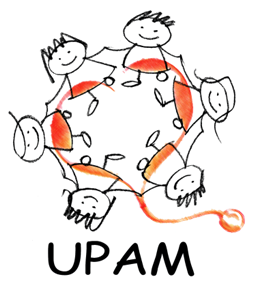WanLing Yang's Group in Bioinformatics


@Li Ka Shing Faculty of Medicine, The University of Hong Kong
Softwares
-
HLA-IMPUTER
Description: HLA-IMPUTER implements the HIBAG algorithm for HLA allele imputation with different population specific reference panels, including a new Han Chinese reference panel derived from 10,689 samples. We provide a simple convenient platform for researchers to impute HLA alleles and perform association analysis.
-
HRRA
Description: Homozygous Regions of Recent Ancestry (HRRA) implements an algorithm to estimate the HF of any homozygous region in a patient's genome, making use of information from unaffected individuals from the same population rather than relying on data from family members.
-
EcMap
Description: This is a simulation program that allows users to evaluate the size of their families for linkage analysis. The software simulates homologous recombination and inheritance process based on a Chi-square model simulating physical interference but not chromatid interference. The genetic distance map was obtained from HapMap and reflects average male and female genetic distances for each chromosome. It answers the following questions: based on the family size and expected penetrance, what would be the probability that the mutation region is the only linked region? If not so, how many regions one would usually have to deal with? What would be the sizes of these regions (cM)?
-
HaploShare
Description: Recent founder mutations may play important roles in complex diseases and Mendelian disorders. Detecting shared haplotypes that are identical by descent (IBD) could facilitate discovery of these mutations. Several programs address this, but are usually limited to detecting pair-wise shared haplotypes and not providing a comparison of cases and controls. We present a novel algorithm and software package, HaploShare, which detects extended haplotypes that are shared by multiple individuals, and allows comparisons between cases and controls. Testing on simulated and real cases demonstrated significant improvements in detection power and reduction of false positive rate by HaploShare relative to other programs.
-
EFIN
Description: EFIN is a free tool which predict whether amino acids substitution would related to disease evaluated by random forests based on protein conservation.
-
SRinversion
Description: SRinversion, a framework to analyze poorly mapped or unmapped reads by splitting and re-aligning them for the purpose of inversion detection. SRinversion is very sensitive to small inversions and can detect those less than 10 bp in size. We applied SRinversion to both simulated data and high-coverage sequencing data from the 1000 Genomes Project and compared the results with those from Pindel, BreakDancer, DELLY, Gustaf and MID. A better performance of SRinversion was achieved for both datasets for the detection of small inversions.
-
PriVar
Description:Next-generation sequencing has become a valuable tool for detecting mutations involved in Mendelian diseases. However, it is a challenge to identify the small subset of functionally important mutations from tens of thousands of rare variants in a whole exome/genome. Therefore, we developed a toolkit called PriVar, a systematic prioritization pipeline that takes into consideration calling quality of the variants, their predicted functional impact, known connection of the gene to the disease and the number of mutations in a gene, and inference from linkage analysis.
-
HLA reporter
Description:Human leukocyte antigen (HLA) typing from next generation sequencing (NGS) data has the potential for widespread applications. Here we introduce a novel tool (HLAreporter) for HLA typing from NGS data based on read-mapping using a comprehensive reference panel containing all known HLA alleles, followed by de novo assembly of the gene-specific short reads. Accurate HLA typing at high-digit resolution was achieved when it was tested on publicly available NGS data, outperforming other newly developed tools such as HLAminer and PHLAT.
-
KGG/GATES modification (region-based test)
Description:
- Option1: download this modifIed KGG package in a whole.
- Option2: download this genomic-region annotation file and replace the file '/kgg3d5/resources/hg19_refGene.txt.gz' from KGG.
- NOTE: don't let KGG's update overwrite the modified file 'hg19_refGene.txt.gz'.